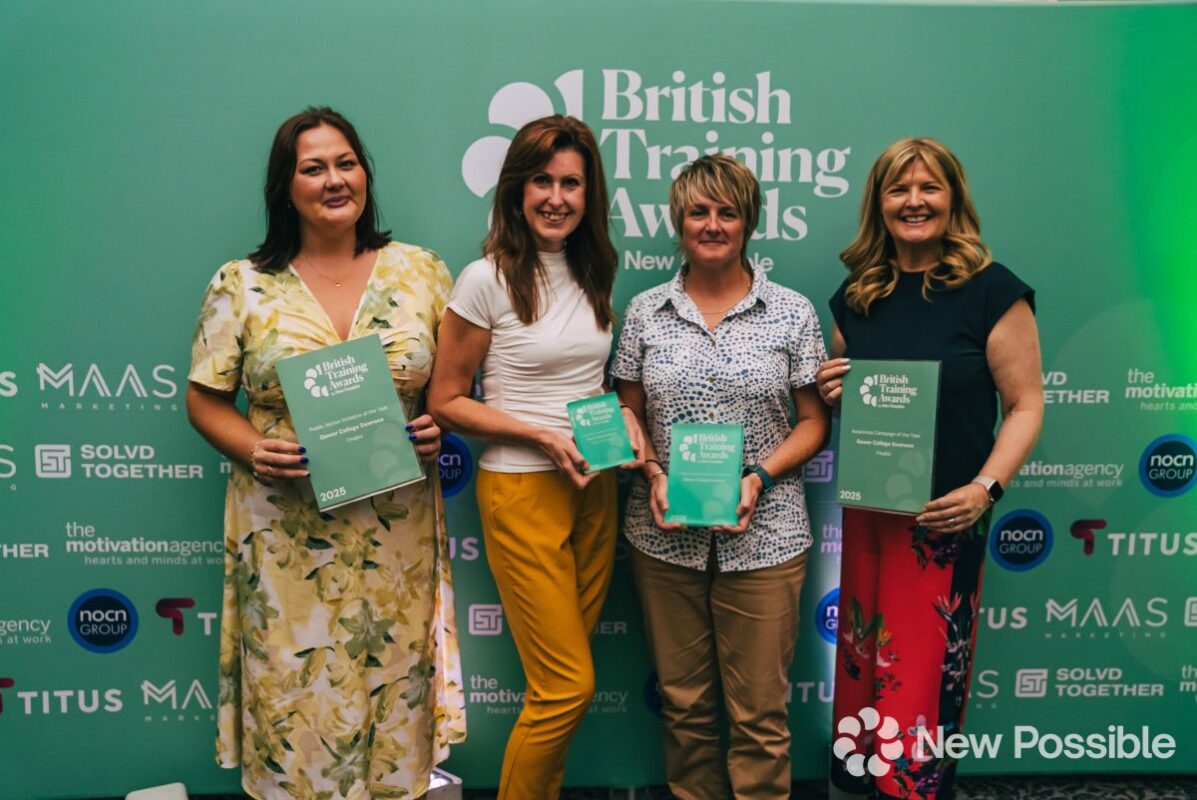The pandemic reawakened our love for learning – now AI can open even more doors

Growth in learning recorded during the pandemic has continued since then. But can technology enable more people to study in a way that suits them?
Introduction
If there’s one policy area on which the General Election manifestos are in agreement, it’s on the importance of skills. And with employer investment down by a quarter since 2005, the need to boost skills levels in the workforce to drive up productivity and economic growth is greater than ever. But it’s not all bad news: the increase in participation in learning recorded during the pandemic has continued since then. As the political parties squabble over who has the best plan for the future, it seems an opportune moment to reflect on how learning has changed over the last few decades.
Historical Context: 1984 and Beyond
1984 was the year in which Torville and Dean skated to Olympic gold, the £1 note was withdrawn and Do They Know It’s Christmas? reached Christmas number one. It was a big year for education too, as education secretary Sir Keith Joseph unveiled historic plans to replace O-Levels with GCSEs. It was also the year which the story of training provider MOL began.
Manchester Open Learning, as it was called at the time, started out delivering corporate training programmes for staff at the likes of British Airways and Argyll Stores (remember them?). Since then it has become a national leader in the field of digital learning, delivering professional qualifications in fields such as management, HR, property, conveyancing, PR and accounting. MOL has been a key partner of the CIPD since 1991, and today offers cutting-edge training to more than 4,000 learners across the UK and around the globe each year.
Evolution of Learning Delivery
Not surprisingly, how MOL delivers training has evolved significantly since 1984. Whereas the majority of the training in its first few years was delivered face-to-face, the preference of employers and learners alike has shifted; first towards a blended model, and more recently towards purely online provision being the preference of the vast majority of individuals and organisations. As MOL celebrates its 40th anniversary, it has teamed up with Learning and Work Institute to look at how participation in learning has changed.
Adult Participation in Learning Survey: Key Findings
Learning and Work Institute’s annual Adult Participation in Learning Survey is the longest running survey of its kind providing an overview of the level of participation in learning by adults, with a detailed breakdown of who participates and who does not, over the course of the last three decades. The nationally representative survey of 5,000 adults in the UK, first carried out in 1996, deliberately adopts a broad definition of learning, including formal, non-formal and informal forms of learning. The survey also provides insights on how adults are learning, the benefits people experience from taking part, and the barriers they come up against.
Participation Rates
The survey has seen a number of changes in trends over this time, not least in the number of adults taking part in learning within the last three years, which in 2023 rose to its highest rate since the survey started (accounting for nearly one in two adults, 49%). This continues the step change in learning participation seen since the pandemic. This, in turn, followed a decade of declines, with the 2019 survey measuring a record low of just one in three adults (33%) participating in learning.
Impact of Technology
The data also highlights that, over the last few decades, developments in technology have changed the way we live, work and learn. In 2011, just 7% of respondents said they had learned online, rising to 47% by 2019. The Covid-19 pandemic accelerated this trend, with nearly two in three adults (64%) saying they had learned online in 2023.
Another change tracked by the survey is the increase in adults learning independently. This is likely to be connected to technology and the internet becoming mainstream, enabling more people to learn remotely. In 2011, just one in ten adults (12%) reported learning independently, rising to one in five (21%) by 2018 and one in three (34%) in 2023.
Motivations for Learning
One of the biggest shifts in learning that we’ve seen since the pandemic is a higher proportion of adults motivated to learn for leisure, with two fifths (41%) of adults saying they engaged in this in 2023. Five years earlier, just one in five (23%) cited leisure as their motivation to learn.
Adapting to Learners’ Needs
The increase in participation since the pandemic, driven by a rise in independent learning for leisure, is clearly positive. But the survey results highlight the importance of ensuring different forms of study are available to allow individuals to fit in learning around the lifestyle needs, time pressures and personal preferences. For instance, MOL offers a combination of live online training delivered by a tutor – which offers learners the opportunity to engage with an expert in real time – and pre-recorded, on-demand programmes, which enable individuals to log on and learn at a time and pace which suits their lifestyle. We are also pioneering the use of AI in learning – not as a cost-cutting process of automation, but actually to offer a more responsive package to learners. For instance, using an AI marking assistant provides tutors with instant analysis of learners’ answers to questions and a suggested mark – but the tutor always has the final say, using their professional expertise to ensure the process is fair and accurate. The AI assistant reduces the time taken to mark papers, and improves its accuracy as it learns from feedback given by tutors.
And we are also using AI avatars to deliver training instead of ‘real’ teachers. Again, this isn’t about cutting costs, but rather enabling scripts to be updated regularly to ensure content meets current industry standards, without the disruption and delays caused by the content having to be re-recorded by a teacher every time there is, say, a change in property law or GDPR legislation.
Conclusion
The growth in learning participation since 2019 demonstrates an innate interest in learning among adults, whether for professional development or leisure. We must tap into this and ensure that people have a range of opportunities to learn – and they don’t face limits in the types of learning they can pursue.
By Mel Nicholson, Managing Director, MOL and Total People and Emily Jones, Deputy Director of Learning and Work Institute











Responses